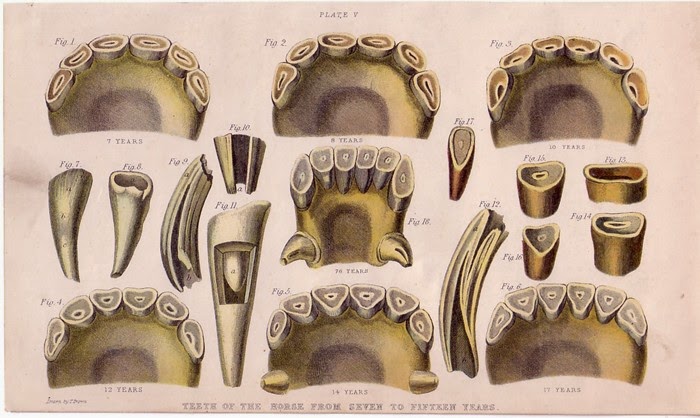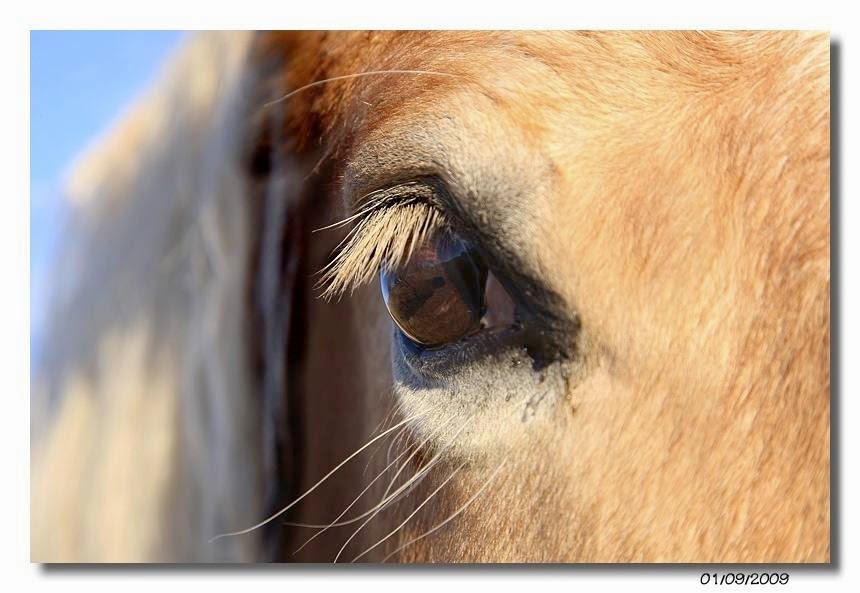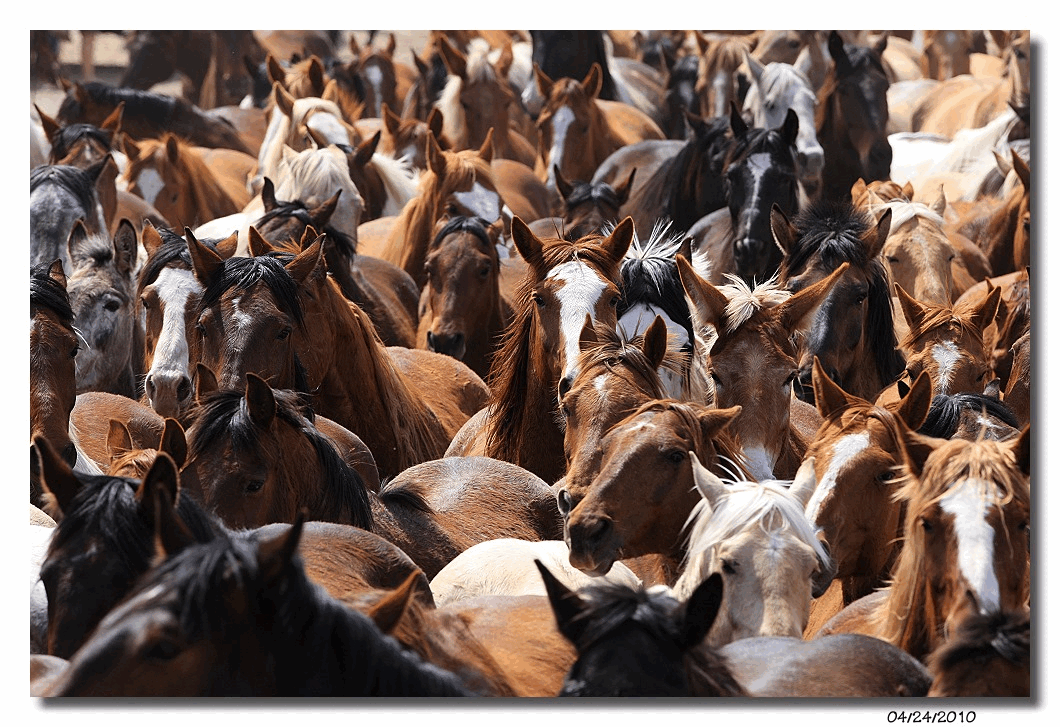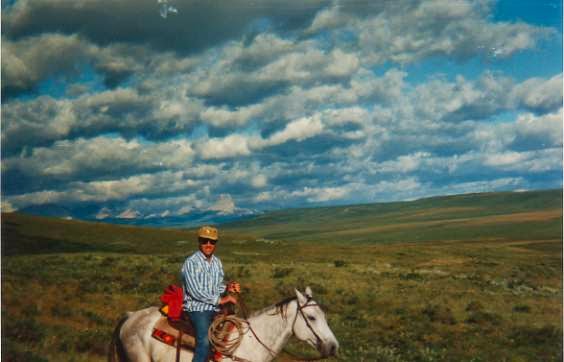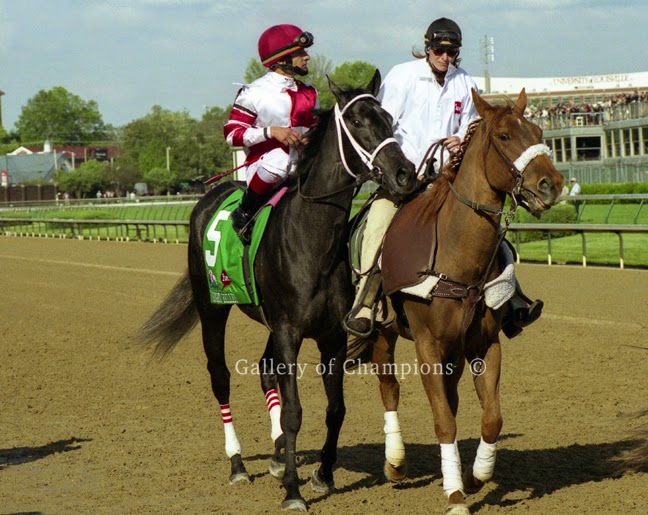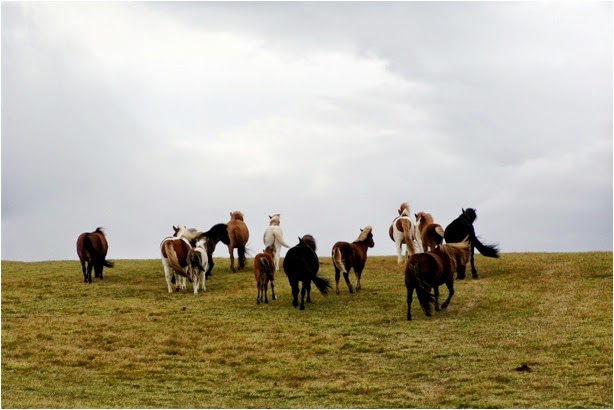Minimizing Risk Between Horses and Humans
Sid Gustafson DVM, Veterinary Behavior Educator and Practitioner 918 South Church Avenue Bozeman, MT 59715
Equine Behaviour Educator, University of Guelph Office of Open Learning, and Equine Guelph
The Appreciation and Application of Equine Behaviour Minimizes Risk to Both Horse and Human
Abstract:
This is a review to promote an appreciation of the horse to minimize and effectively manage risk when humans and horses interact. This paper is a primer on equine behavior, and portrays the educational approach to fulfill the health and welfare of horses from the horse perspective, rather than from the human perspective. Behavioral study and appreciation of the evolved nature of horses provide the foundation for the contemporary principles equine welfare and safety. Friends, forage, and locomotion are the long-evolved requirements for healthy horses to facilitate optimum health, performance, and healing. When humans appreciate and fulfill the needs and preferences of horses, risk is minimized on all levels of interaction for both the horse and the human.
Keywords: equine behaviour, risk, human injury, horse injury
Equine Behavior Through Time
Horses began their journey through time 60 million years ago. Three million years ago the footsteps of man were fossilized next to the hoofprints of horses, suggesting that humans have been contemplating horses for some time. But it was not until perhaps ten thousand years ago that man began the dance of domestication with horse. There is archeological evidence that man had formed a close relationship with horses by 5500 years ago in Botai, where the horsefolk kept and milked horses, and probably rode them. Horses provided these early horsefolk with nearly everything they needed. It is interesting to note that large domestic dogs lived with these early horsefolk as well, but no other domestic animals. To understand the domestication process is to appreciate equine behaviour. Horses apparently became domesticated because they found a niche with man long ago on the steppes of Kazakhstan. Both trained and wild horses existed in this realm south of Russia and west of China. A population of horses more amenable to captivity and taming than their wild counterparts likely provided the stock for the first horse societies. Rather than plucking wild horses out of the wild and taming them, it is thought that over tens of thousands of years a relationship developed in a shared niche.
By the early 20th century the closest living relative to man's Equus caballus, the Tarpan, had gone extinct. No truly wild horses remain. All of today’s caballine horses are descended from an original and possibly separate population of horses that were amenable to be tamed and selectively bred by humans. It appears to have taken tens of thousands of years to fully domesticate the horse, and to eventually attain control of breeding. Breeding initially consisted primarily of selection for docility and amenability to captivity, and later milking, riding, driving, and stabling. In contemporary culture, selective breeding often involves selecting for the best athlete, or attempting to select for the best athlete. In addition to genetics, this presentation will focus on the socialization aspect of raising horses, and portray the importance of nurture on the eventual behavioral and physical health of the adult athlete.
No longer does man depend on horse for survival as he once did. Although still bred for trainability, more and more horses are today bred for specific performance goals. These days, horses provide man with entertainment, recreation, sport, esteem, performance, and pleasure, and, as ever, but in fewer and fewer reaches, utility. Other than stockmen, few others rely on horses for to sustain a pastoral livelihood. This new role of the horse requires renewed studies and considerations of equine behavior.
Horsefolk and veterinarians alike remain enticed and intrigued by horses. The science of
equine behaviour attempts to appreciate just who horses are, and from the horse perspective. To appreciate the horse perspective, behaviorists explore the evolution and domestication of the horse. We continue to find ourselves attempting to appreciate how the current human/horse relationship came to be so as to facilitate a smooth trouble free relationship with our horses. As well, appropriate breeding, socialization, and training of horses helps minimize behavioral wastage.
To understand where our relationship with the horses is headed, veterinary behavior practitioners attempt to see where the human/horse relationship has been, and then to modify the relationship to favor the horse. Humans continue to live with horses and continue to learn from them, as all horsefolk have through time, but now much less time is spent with horses learning from horses, so contemporary practitioners must research and make themselves aware of behavioral principle that were once gleaned from a near-constant exposure to horses through all stages of their development. We study the evolution and domestication of the horse to better help us appreciate the horses we have in our hands today. Evolution and domestication provide a basis for the understanding of equine behaviour. Man has attempted to refine his relationship with the horse ever since the first kid grabbed a mane and swung atop a horse. To become a partner with the flighty, powerful (but trainable and tamable) grazer of the plains remains the horsefolk goal.
Appreciation and sensitivity to all of our caballine horses' evolved preferences results in optimum behavioural health and soundness, and therefore optimum performance and minimization of risk to both horse and human. A horse cannot be coerced to win the Kentucky Derby. The people must work with the horse, and from the horse’s view. If we understand equine behaviour, we understand what makes horses do our bidding, and do it well. To this day, content horses seek to appease their domesticators. Horses are willing learners. This learning behavior is a result of evolutionary development of a complex social lifestyle. More recently, selective breeding has influenced equine behaviour. The nature of the horse is enhanced by the horse’s social development. Appropriate socialization with other horses in herd pasture setting best prepares horses to be subsequently trained by horsefolk. Pastured horses train up and learn more efficiently than stabled horses. The appropriate, efficient, and considerate training of horses is highly dependent on their previous socialization by the dam and other horses, as well as their current husbandry situation. Trainability is heavily influenced by the intensity and type of stabling and husbandry, not to mention the type of training. In the latest revolution of horsemanship, the area of appropriate socialization and stabling has not received the attention it deserves.
Horses are a quiet species. They prefer calm, and learn most efficiently in tranquil, familiar settings. Horses must know and be comfortable and secure in their environment to be able to learn as horsefolk hope them to learn. Horsefolk all know what we want from our horses, however in this paper I shall present the science of what our horses want and need from us, the science of equine behaviour. Equine behaviour is not only the basis of training and trainability, but also the very basis of equine health. To succeed in our endeavors with horses (whatever the our equine goals or pursuits), our horses are best served to receive what they preferentially need and want behaviourally, nutritionally, socially, physically, environmentally, visually, and metabolically. In order to properly care for horses and successfully teach and train horses, horsefolk must know horses. They must know who the gregarious grazers of the plains are. They must know how to properly socialize horses through their growth phase to ensure that their horses grow up to be horses. Horses raised out of the herd context are vulnerable to behavioural insecurities later in life. Most behavioural wastage is due to improper socialization and husbandry.
Rather than dissimilar to us, horses are much like us. In this article, I will focus on humankind's social and communicative similarities to horses. As with people, strong social bonds develop between individual horses and groups of horses. This herd nature results in intense social pair and herd bonds. Horses need other horses. Horses require other horses for security, comfort, and behavioural health. Horses need friends throughout their entire life, first their mother, and then their herd. Today’s domestic horse needs horse friends and human friends, although horses do retain the wherewithal to survive just fine without horsefolk. Horses need friends so preciously and constantly, that horses allow horsefolk to substitute as friends. This is because man shares a sociality with domestic horses. We speak their gesture language, and horses speak ours. We share a language of movement.
Domestic horse is no longer man’s prey, and has not been for thousands of years. Horse has been brought into the circle of humanity, along with a dozen or so other domesticates. Horse and man have co-evolved together for thousands, if not tens of thousands of years. Each knows the other, well.
The importance of constant locomotion is paramount to appreciating equine behaviour and learning. Locomotion. Horses need movement. In addition to friendship, they require near- constant movement. If we do not allow or facilitate abundant daily movement in horses, horses will move in ways that are prone to injure people and themselves. Interdependence exists between horse health, behaviour, and locomotion. Horses evolved to be near-constant walkers and grazers. If this is taken away, horses can become a danger to themselves and to humans. The last place a horse evolved to be is alone in a stall. Despite domestication and selective breeding for docility and captivity, horse health remains dependent on locomotion. Locomotion is inherent to grazing. Locomotion is inherent to digestion, to respiration, to metabolism. If horses are not allowed to move about freely and socialize with other familiar horses grazing and chewing as they evolved to do, they become troubled. Horses deprived of locomotion and constant forage ingestion develop strategies to maintain the motion and oral security they feel they need to survive.
The primary premise of equine behavioural health is this: In natural settings, horses walk and graze together with other horses two thirds of the time. They take a step and graze, then another step or two grazing and moving along, always observing their surroundings, grazing while in touch with other members of the herd unless playing, dozing or sleeping under the watch of others. Horses that are not afforded the opportunity to graze and walk much of the time take up with behaviours to replicate essential locomotion. When stabled, some of the horse's long- evolved survival behaviours become unwanted and unwelcome. When behavioural health is maintained, risk to both horses and humans is minimized.
Horses require friends, forage, and locomotion to stay healthy, content, and productive. In rural settings, these requirements are easy to fulfill. Open grasslands and steppes are the geography and environs that the most recent predecessors of Equus caballus evolved. The further we remove horses from their social grazer of the plains preferences, the more health and behavioral issues develop that require treatment and management by veterinarians and horsefolk.
Stabling, stalling, hospitalization and transport all deprive horses of their preferences for friends, forage, and locomotion. Although convenient for horsefolk, stabling is inconvenient for horses. When stabling is required, horses are best served to have their natural needs re-created in the stable. Once our horses behavioural needs are understood, appreciated, and fulfilled the learning and training can begin. Enrichment strategies re-create the needs of stabled horses. Those strategies that best replicate the grazer of the plains scenario promote the best health and performance.
Locomotion is essential for both horse health and healing.
Husbandry, healing, and rehabilitation nearly always benefit from appropriately managed and free choice locomotion strategies that are constantly tailored to the horse's healing process. Locomotion is required not only for normal healing, but for normal digestion, respiration, hoof health, circulation, and all other physiologic functions of the horse. Stall rest is at the expense of many systems, especially the hoof and metabolic systems. Digestion and respiration are compromised by confinement and restriction of movement. Metabolic, digestive, circulatory, hoof health, musculoskeletal, and nervous, systems, as well as the all other systems and functions of the horse, are dependent upon adequate and appropriate locomotion for normal functioning and/or healing.
For horses that are hospitalized, paddocked, stabled, and corralled; active implementation and re-creation of the social pasture setting is required to optimize and maintain behavioral and physical health and promote healing. Medical conditions are apt to deteriorate in the face of the deprivations of forage, friends, and locomotion created by stabling and hospitalization. Unwelcome behaviours are minimized when the nature of the horse is fulfilled, making everything safer for both horse and human. Re-creation of a natural setting in the stall is the biggest challenge veterinarians face in maintaining the health of stabled horses while reducing the risk of injury to both horse and human.
Stalled horses not only heal poorly, they behave poorly, often transferring their need to move and socialize to aggressive behaviour towards their handlers, putting both at risk. Locomotion, social, and forage deprivations create problems for horses andhumans. In addition to appropriate medical treatment, veterinarians and horse program managers must creatively provide horses with abundant socialization, forage, and locomotion to maintain behavioral and physical health. Maintenance of the horse’s nature facilitates healing and behavioral health within the parameters of acceptable medical and surgical treatment. Restriction of locomotion to facilitate healing necessitates the implementation of enrichment strategies to simulate locomotion, including massage, passive flexion, and a wide variety of physical therapies.
Horses also heal horsefolk, and those horsefolk that implement these healing strategies often experience a sense of healing themselves. The human/horse bond runs deep. Domestication of the horse is a co-evolving evolutionary process. The human perspective is being shaped by the horse's perspective these days. Appreciation and application of the science of equine behavior and equitation are encouraged to support the renewed interest in equine medicine and welfare, and to facilitate the veterinarian’s role of providing horses with their essential needs, and to minimize risks when horses and humans mingle and interact on a variety of levels.
References and suggested reading.
McGreevy, Paul, (2004) Equine Behavior: A Guide for Veterinarians and Equine Scientists Philadelphia: Elsevier Limited. ISBN 0 7020 2634 4
Olsen, Sandra, Horses and Humans, The Evolution of Human-Equine Relationships, 2006, Sandra Olsen, Grant, Choyke, and Bartosiewicz, BAR International Series 1560, Archeopress, England, ISBN 1 84171 990 0
McGreevy, Paul; McLean, Andrew, Equitation Science, Wiley Blackwell, UK, ISBN 2009048321
McGreevy, P.D. et al, (2007) “Roles of Learning theory and ethology in equitation” Journal of Veterinary Behavior 2, p. 108-118.
McGreevy Paul D., (2006) “The advent of equitation science” The Veterinary Journal 174 p. 492-500.
Waran, N., McGreevy, P., & Casey, R.A., (2002) “Training Methods and Horse Welfare”, in Waran, N., ed., The Welfare of Horses, Dordrecht, The Netherlands: Kluwer Academic Publishers (2002) 151-180.
Magner, D. (2004.) Magner’s Classic Encyclopedia of the Horse. Edison, New Jersey: Castle Books, 2004.
Dr Gustafson is a practicing veterinarian, equine behavior educator, and novelist. The application of behavior science enhances optimum health, performance, soundness, contentment, and longevity in animal athletes. Behavioral and nutritional strategies enrich the lives of stabled horses. Training and husbandry from the horse's perspective result in content, cooperative horses who are willing to learn and perform.














